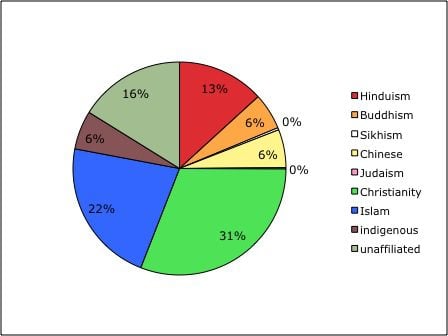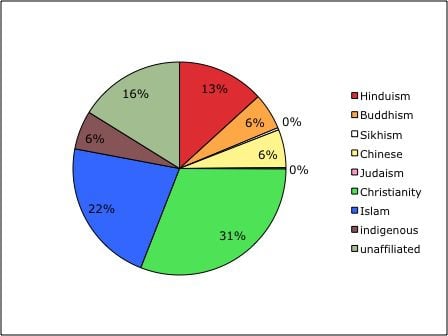People engaged in a personal spiritual search, or on a private religious quest, often conduct it in a limited fashion, largely unaware of the immense variety of living religions and spiritual pathways that actually exist out there, in the wider world.
Students entering world religions courses, on the first day of a new semester, often arrive with only a fuzzy sense — at best — of just what the wider global religious and spiritual landscape really looks like.
Seekers curious about other religions and alternative spiritualities may lack enough background knowledge to really be adequately informed regarding the full range or spectrum of faiths and paths potentially available to them, and just how broad their range of options really might be.
Before one can be an informed consumer in the metaphysical marketplace of ideas, one first must have some clear idea of just what that marketplace consists of. To be a savvy, informed shopper, one must begin by familiarizing oneself with the size and scope of today’s spiritual supermarket.
Basic knowledge of comparative religion and global spiritualities is seldom part of most people’s education these days. The result is that a lot of intelligent and otherwise highly informed folks go through life with a very limited (if not also somewhat distorted) understanding of all the religious options and spiritual choices open to them; in particular, they may lack a comprehensive “bird’s eye-view” of global religion in a nutshell.
Many might stand to benefit from an initial general overview of the global Big Picture, one that at least focuses upon, if nothing else, just the world’s major religions — how many there are, how old they are, how big they are (in addition, of course, to the more specific and detailed “nuts and bolts” of what each religion believes, and how each religion practices what it preaches). They could use an overall orientation to, or road map of, the most prominent features of the worldwide religious landscape.
A good way to begin can be by simply looking at a highly visual breakdown of at least the largest, and/or the most globally influential, of the various major faith traditions currently found upon this planet. A graphic representation, such as the following pie chart, can very quickly orient newcomers to the field by providing a much better sense of the broad outlines and border of the global religious landscape — a landscape that awaits their closer, and perhaps more selective, additional explorations.
Out of a total world population currently close to seven billion people, the global religious “pie” slices up roughly as follows:
(To be continued, in Part Two.)


